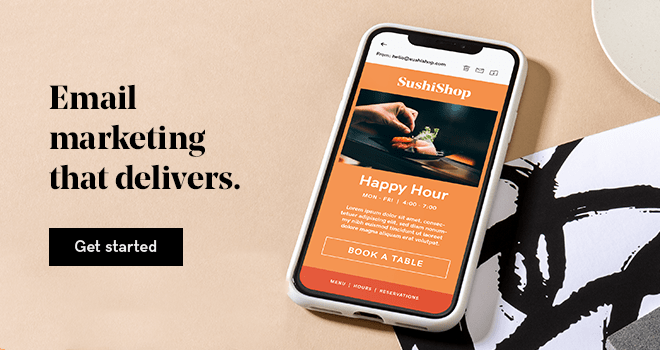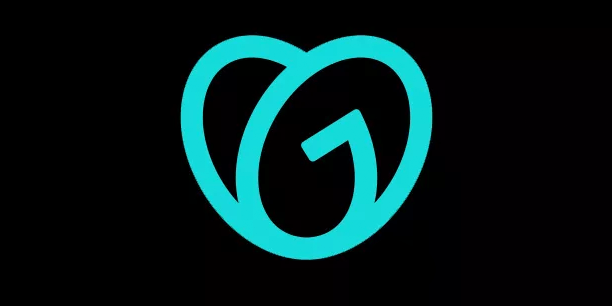If you want to start your own small business, you need a small business sales plan. And like all good plans, it can't just live in your head. It needs to be put to paper—or at least in a digital document—so it can be shared with your team.
Everyone, especially current and future employees, should understand your business's goals and how you plan to achieve those goals.
This unifying document of objectives and strategies is typically called a small business sales plan. It should include everything from a profile of your target customer to the tools you'll need to reach that customer and the metrics you'll use to measure your success.
Keep in mind that you'll need a business sales plan when starting up, but you can always create new sales plans as time goes on and your objectives change.
There are plenty of business sales plan templates online that allow you to simply fill in the blanks with your business details and concepts. These days, you can create a business plan with AI to get started. Regardless of whether you use a template or create your own, understanding what elements to include in a business sales plan is crucial.
Below is a rundown of everything a business sales plan should include to be successful.
Benefits of a comprehensive sales plan
A great sales plan isn’t just a list of goals and tactics. Think of it as your team’s playbook. It’s the document that keeps everyone rowing in the same direction and helps you work smarter (not harder). Here are some of the benefits of an effective sales plan:
Aligns the sales team
A strong sales plan does more than align your team, it’s the roadmap that ensures everyone understands not just the destination, but exactly how to get there. By clarifying roles and expectations upfront, you turn individual efforts into coordinated action.
Optimizes performance through systematic processes
Building consistent systems into your sales plan is the backbone of smoother operations and fewer wasted efforts. When you establish clear workflows, you give your team the structure they need to succeed. The goal isn’t to simply check boxes, it's all about how you create a repeatable formula to consistently hit targets and build stronger client relationships over time.
Facilitates continuous improvement
Your sales plan shouldn't be a set-it-and-forget-it checklist. It should be treated as a living blueprint for growth. With this mindset, you’ll create a cycle of improvement that keeps your strategies sharp.
SMART objectives
What are you trying to achieve? Do you want to increase revenue, gain more clients, become more productive, or expand your content marketing efforts? Maybe all of the above?
Your business sales plan should spell out your objectives, which should also be "SMART" objectives.
SMART stands for:
- S: Specific
- M: Measurable
- A: Attainable
- R: Relevant
- T: Time-bound
Here’s a quick run-down of why each objective matters:
Your objective should be specific because it gives you a goal to meet. "Increase my revenue" isn't a goal, it's an ideal. But "increase my revenue by 50 percent by the end of the year" is.
Your objective should be measurable because, otherwise, how will you know if you've met it?
Again, "Increase my revenue" is a nice idea, but when do you consider that a success—if you increase it by $1? How about $100? Or is $100,000 enough?
Your objective should be attainable because there's no point in including it otherwise. Give yourself a chance to organize your tools and systems to make this happen, or move on to something else.
Your objective should be relevant because the line between success and failure is quite slim for small businesses. Every minute spent on something irrelevant is another minute you're falling behind your competitors.
Finally, your objective should be timed in order to give yourself a deadline and help you focus your efforts on achieving that goal within the specified timeframe.
Extending SMART to SMARTER
Want to level up your goal-setting game? Try the SMARTER framework. It builds on SMART goals by baking in two game-changing habits:
- E: Evaluated
- R: Reviewed
This isn’t about setting targets and walking away. By building regular check-ins into your process, you keep your goals tethered to your business’s real-time needs. It’s how you spot when a strategy’s gone stale and allows you to pivot before small issues snowball.
The payoff? Ongoing pulse checks keep your team agile, and your strategies stay sharp.
Importance of sales forecasting
Sales forecasting is an important part of your sales plan. It's essentially your compass for navigating what’s ahead. By blending historical data, current market shifts, and upcoming opportunities, you’re better equipped to build a data-backed roadmap for your small business.
And here’s why it matters:
- Realistic targets: Forecasts ground your goals in reality (ambitious but achievable).
- Resource smarts: You’ll stop overstaffing slow months or scrambling during peak demand.
- Confidence in decisions: When you know where you’re headed, every hire, inventory purchase, or campaign launch becomes strategic, not a roll of the dice.
An accurate sales forecast doesn’t predict the future, but it does help you to shape it.
Analyze past sales trends
Think of your past sales data as a cheat sheet for what’s coming next. To build an accurate trend, you'll want to track recurring patterns like seasonal spikes, growth trends, and customer buying cycles. The goal here is to find proven insights to predict (and prepare for) what’s around the corner for your small business.
Assess market conditions
Market shifts such as economic tides, industry shakeups, or competitor moves are inevitable parts of the market that will impact your business. Treat market trends as your early warning system. If you monitor trends religiously, you’ll be better able to spot when to double down on hot products, pivot your pricing, or retool campaigns before opportunities slip away.
The idea here is to keep ahead of trends by paying attention to the data. Market awareness should be a key part of your team’s DNA.
Consider upcoming business factors
Don't forget to factor in your own goals when creating a forecast. Your product launches, marketing pushes, and pricing tweaks can make or break your next quarter. Before setting targets, ask:
- Will that flashy new campaign actually pay for itself in margins?
- What bottlenecks could derail our rollout timeline?
Bake these variables into your forecasts from day one. When your sales goals sync up with internal moves (like doubling inventory before a big promotion or trimming costs ahead of a price drop), you’re better able to control your own outcomes.
This tight alignment turns wishful thinking into actionable plans.
For more insights on key performance indicators that can aid your small business with sales forecasting, visit our guide on ecommerce KPIs.
Alternative goal-setting frameworks
CLEAR goals
If SMART goals aren’t working for your team, CLEAR goals might be a better fit.
CLEAR goals are:
- C: Collaborative
- L: Limited
- E: Emotional
- A: Appreciable
- R: Refinable
Unlike rigid frameworks, CLEAR recognizes that great goals aren’t just about metrics, they’re about people. When your targets require cross-team buy-in (think sales and marketing collaborating on a campaign), keep them tight enough to avoid scope creep, and inject some passion (“Let’s crush Q4 to fund our new community program!”).
Break ambitious goals into weekly sprints using tools like Trello or Asana, and schedule monthly check-ins to adjust timelines or resources. This approach keeps strategies fresh and teams invested. Nothing kills momentum faster than chasing targets that feel outdated or disconnected from daily realities.
FAST goals
Another alternative framework would be FAST goals.
FAST stands for:
- F: Frequently discussed
- A: Ambitious
- S: Specific
- T: Transparent
FAST goals push for objectives that blend ambition with precision. When you pair regular check-ins with full visibility across teams, you foster ownership at every level, thus helping to transform plans into momentum.
The key is choosing a framework that aligns with your team’s DNA. Get this right, and you’ll supercharge your goal-setting process, turning it from a box-ticking exercise into an engine for growth.
Customer or organization profile
Whether you're selling your products or services to a customer or to another business (B2C or B2B), you need an idea of who that person or organization will be.

An ideal business sales plan includes profiles of your ideal customer. Customer profiles include key demographic details like age, gender, and what kind of devices they typically shop on or websites they visit. Organization profiles will have information like company size by annual revenue, size by employees, and relevant industries to target.
These profiles will help you focus your business sales plan. Focusing does not narrow your horizons but helps you decide where to cast your net so you can begin actually selling to people.
Another aspect to consider is the general sales territory you're looking to cover. You can use this section to divide up geographic regions to different salespeople or to simply note that you'll be focusing on people in your metropolitan area for the time being.
Proven strategies
Knowing what you want to accomplish and with whom you want to accomplish it is only the beginning.
You also need strategies and tactics for actually achieving your objectives, and those should be discussed in detail in your business sales plan.
New business strategies
New business strategies that you would typically find in a business sales plan include:
- Exceed quotas: Send at least "X" number of emails, make at least "X" number of cold calls, make at least "X" presentations each week.
- Increase marketplace awareness: Join associations, attend trade shows, engage with a digital marketing campaign strategist to discuss how to increase social media presence.
- Obtain referrals: Follow up with prior or existing customers and see whom they can refer to you for future business. A happy customer can turn into a customer advocate - and this is priceless.
Existing customer strategies
Need some suggestions on how to keep your customers coming back? Here are a handful of ideas:
1. Become their go-to resource
Ditch generic newsletters. Send hyper-relevant updates that solve their specific pain points. So, more like “How to double ROI with Feature X” than “Monthly Digest.”
2. Turn customers into connections
Leverage happy clients as bridges to new prospects. If they’re happy with your business, then they probably also know other possible clients that would appreciate your work as well.
3. Upgrade their experience
Do you have customers who settled on your basic plan? Pitch premium features that directly address their growing needs (make it meaningful, not just a sales push).
4. Treat feedback as fuel
Don’t just survey your customers, act on the results that you get. And once you do, share exactly how their input shaped your new feature rollout, proving you’re invested in their success.
5. Build a rewards ecosystem
Beef up your loyalty program to reward repeat customers. For example, discounts for referrals, VIP support for long-term clients, co-branded swag for case study participants, etc.
6. Make it personal
Send handwritten notes on work anniversaries, host client-exclusive webinars with their team’s questions answered live, and turn transactions into relationships.
Crafting a compelling sales message
A razor-sharp sales message isn’t just about listing features. It’s your hook to make prospects stop scrolling and think: “This solves my problem.” Cut through the noise by ruthlessly focusing on what makes your offering irreplaceable.
Identify your unique selling proposition (USP)
Your USP is what makes your product or service stand out.
It could be a unique feature, an exceptional quality, outstanding customer service, or anything that adds value for your customers.
Finding your USP is the first step in crafting a sales message that resonates.
Here's an example: If you’re a bakery, don’t just say “fresh bread.” Show how your sourdough starter’s been alive since 2012, making their Tuesday toast ritual unforgettable. That’s the difference between being another option and the option.
The key here is to ditch vague claims. Instead, spotlight the exact benefit competitors can’t replicate. Whether it’s your 24/7 concierge support, patented tech, or how you’ve helped clients in their industry slash costs by 30%, that’s how you get your message across.
Understand your target audience
Knowing who your customers are allows you to tailor your message to their needs and preferences. Consider creating detailed buyer personas that encompass demographics, interests, challenges, and purchasing behaviors.
According to Shep Hyken, “84% prefer companies that offer a personalized experience”. This insight will help you address their specific concerns and motivations.
Focus on benefits over features
Features tell customers what your product does. Benefits show them why they should care. Instead of rattling off specs, spotlight the real-world wins:
- How does your solution let them reclaim 10 hours a week?
- Slash overhead costs?
- Or finally hit those stretch goals?
This is the difference between selling and solving. When your message starts with “Here’s what this means for you…” instead of “We have…”, you’re proving that you understand what keeps them up at night.
Use clear and concise language
Ditch the buzzwords. Your sales message should click instantly. Speak human, not industry insider.
Here’s a quick litmus test: If your grandma wouldn’t get it within five seconds, simplify it further. Instead of “leverage synergistic paradigms,” try “saves you 15 hours a month.”
Think of your message as a spotlight, not a fog machine. Every sentence should answer one question: “Why should they care?” Cut the fluff and lead with outcomes.
Clarity isn’t dumbing things down, it’s respecting your audience’s time and intelligence.
Create a strong call to action (CTA)
A compelling call-to-action (CTA) is essential for guiding your audience toward meaningful engagement. Avoid vague invitations. Instead, align your CTA with your audience’s immediate needs and priorities.
Effective CTAs function as decision catalysts. Nail it and you’ll transform lookers into buyers who feel confident taking the leap with your company.
Useful tools and systems
In our increasingly digital world, there are countless possibilities for tools and systems you can buy, subscribe to, or otherwise access in order to achieve your goals more easily.
What tools will you need to complete your objectives?
Do you need customer relationship management software to help you stay on top of deals and discover new leads?
Do you need an email marketing platform to stay in touch with existing customers? Do you need communication and collaboration apps like Microsoft 365, Slack, or Google Workspace to keep your team on the same page?
Nothing should be overlooked here, from your phone and business email systems to your weekly sales progress reports.
Everything that you will use should be accounted for and noted.
Determining your pricing strategy
Now that you’ve crafted your sales strategy, it’s important to pair that with a well-thought-out pricing strategy. Determining the right price for your products or services is crucial for any business.
We recommend considering the following when creating your pricing strategy:
Calculate production costs
Pricing starts with fully understanding each of the layers of your costs. This includes considerations like materials, labor, and operational expenses (yes, even that software subscription everyone forgets about). When you know exactly what is involved with your profit margins, you’re able to build a foundation for profit that withstands market shifts and fuels growth.
Analyze competitor pricing
It's important to investigate your competitors' pricing structure, but treat it as a benchmark, not a blueprint. A comprehensive competitor analysis should ideally answer two critical questions: Where do we fit in the market’s value spectrum, and how do we articulate why our price is justified?
You’re not just comparing numbers, though. You’re learning the market’s language. If your product costs 20% more than competitors', your messaging needs to spotlight the ROI of your premium materials or white-glove service. Conversely, if you’re the cost-conscious alternative, your pricing becomes a selling point to budget-aware buyers.
Assess customer willingness to pay
It is important to know what your target customer is willing to pay for your product or service. Price too low, and you risk looking like a bargain-bin option. Price too high without the value to match, and you’ll alienate your audience.
Three pillars shape this sweet spot:
- Brand identity: Are you positioning as a luxury innovator or a reliable budget pick?
- Proven impact: Does your product solve a pain point competitors overlook?
- Customer priorities: Is speed worth a premium? Will durability justify higher costs?
Test the waters with A/B pricing trials or focus groups. Ask early adopters not just “Would you buy this?” but “What outcomes would make this price feel like a steal?” This allows you to align your products and pricing with what your customers truly value, not just what they’ll tolerate.
Related: How to price your products
Who's on your team?
Your sales team, when you start off, might just be you. It might be you and a few people. In the future, it might be a whole roster.

But at some point, you need to list each member of the core sales team and describe not just who they are but what they do.
What is their role, what are their responsibilities, and how will you measure their relative success? What key performance indicators are best to use with regard to your own objectives?
You can also note other key players who are not core members, such as third-party marketing support, so people know who their points of contact are outside the company.
Creating a flexible business budget
You need to spend money to make money.
Any good business sales plan will have a general budget (though the more specific, the better), laying out just how much you'll need to spend to be successful, and hopefully not more.
Your budget should include team salaries, subscription costs for your tools and systems like your CRM software or video conferencing platform, travel expenses, and anything else that will go into making your sales.
Succeed with your business sales plan
Let this article be your north star as you craft your small business sales plan. Every strategy, forecast, and customer insight you’ve mapped out isn’t just paperwork; it’s the DNA of your business’s future.
A sales plan won’t magically erase risks, but not having one leaves your success to chance. A gamble where “winning” might mean fleeting luck you can’t replicate. What you’re creating isn’t only a document, it’s an intentional roadmap to help guide your business forward.
This is where hustle meets strategy. When you commit to aligning your team, resources, and goals with clarity, you’re building the infrastructure for sustainable business growth.









